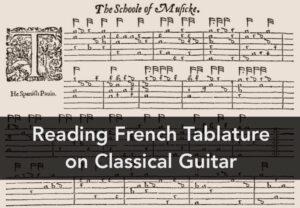Here’s a little video lesson regarding tension and relaxation for classical guitar or musicians in general. It’s more of a discussion than anything else but I hope you find it useful. One of the books I mention is an interesting section from Art of Classical Guitar Playing by Charles Duncan (Amazon link). It was on “The Principle of Functional Tension” and was aimed at dispelling the vague notion of “relaxation” in music. Instead, the author outlines two types of tension:
Dysfunctional Tension: largely involuntary and therefore hard to control. Causes: performance anxiety, superfluous muscle activity; also psychological in nature. There are numerous physiological aspects, everything from non-ergonomic positions, excessive pressure, uncontrolled extraneous tension, teeth clenching, torso swaying…
Functional Tension: good coordination, voluntary tension, directed and focused tension, refinement of technique. Essentially, functional tension accounts for the interconnectivity of muscles in the body and aims to restrict the energy expended to the smallest amount consistent with the musical requirement (page 1).
So, the key to relaxation is a mix of command over technique as well as other physiological and psychologically healthy principles. I like the quote he included from the great piano teacher Arnold Schultz:
How did the word “relaxation” ever gain such tremendous currency in modern pedagogy?… I believe that a general misunderstanding of the significance of a highly coordinated movement is the best explanation… A highly coordinated movement is one which fulfills certain mechanical requirements with a minimal expenditure of physiological energy. This economy of energy, however, is the result of good coordination, not the cause. The relaxation school of piano technique has mistaken the result for the cause, and has sought to produce good coordination by economizing energy. It is not an unusual error in kind (page 2).
The exercise I talk about at the end is from The Inner Game of Music. This book is more of a good read rather than anything too specific.
Regarding the progressive technique book I recommend my book: 20 Favorite Exercises for Classical Guitar. The book is progressive so each exercise builds on the previous one. You can practice the book by creating a model technique and relaxed hand for the first few exercises and maintain that model as you progress to the next one. If you’re looking for amore technique books you can check out my review of classical guitar technique and exercise books.





Great, helpful video, thank you